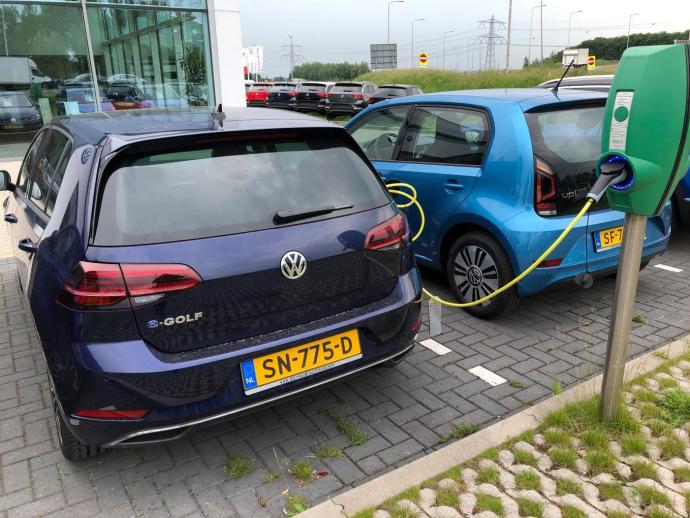When the Dutchman Sibrandus Stratingh developed the first electrically powered vehicle in the world in 1835, he could barely know that almost 200 years later his invention would become a world success. 45,000 fully electric and 94,000 plug-in hybrid cars are now driving on the roads in the Netherlands and this number is still growing sharply. This also means that the demand for batteries will increase further in the future and both the production volume and the efficiency will have to increase. A kilo battery can store a maximum of 150 watt hours (Wh) of energy, compared to 11,000 Wh per kilo of gasoline. But what are the main challenges in the production of batteries?
A battery cell consists of a cathode, an anode, a separator and the so-called electrolyte. The negative anode is usually graphite, but the positive cathode can consist of various metals such as Lithium, Nickel, Manganese, Cobalt and Aluminum. These metals are mixed in a certain proportion to each other and processed into a suspension with binder and additives. This suspension is poured under vacuum on a thin aluminum foil and, after drying, processed into battery cells.
No quality assessment can take place during the entire production process. Only after the battery cell has been completely assembled can the quality of a whole batch of cathodes be tested by discharging and recharging these cells with maximum voltage for several days. At the end of this cycle, the capacity, density, voltage drop and other quality factors are determined and the cells are assigned a category, from A to F. Only batteries of quality class A may be built into electric cars. If the batch does not meet the requirements, the manufacturer must use the cells at a loss for another application or they have to be destroyed, because there is no process to break up and reprocess once produced cells. Because a cost-effective concept for recycling batteries has not yet been developed, these are currently stored in large sheds.

The most important factor for the quality of a battery is the purity of the metal mixture. If foreign molecules enter the mixture during the production process of the suspension, for example from a seal that causes wear to the shaft, the quality will decrease and the batteries may become unusable. CinchSeal has developed the solution for this! A seal that does not cause any wear on the shaft and seals abrasive powders as well as suspensions for a long time, making the production of batteries much more efficient. As CinchSeals don’t require any maintenance work, use 30% less energy than other sealing systems and can even accommodate radial shaft runout and misalignment, the whole production process becomes more efficient, increasing long-term value.
The next major step in this sector is the introduction of solid-state cells, which do not have a liquid but a solid electrolyte and can therefore be produced much lighter and thinner. As a result, the capacity increases considerably and the safety of the cells will also make a major step forward.